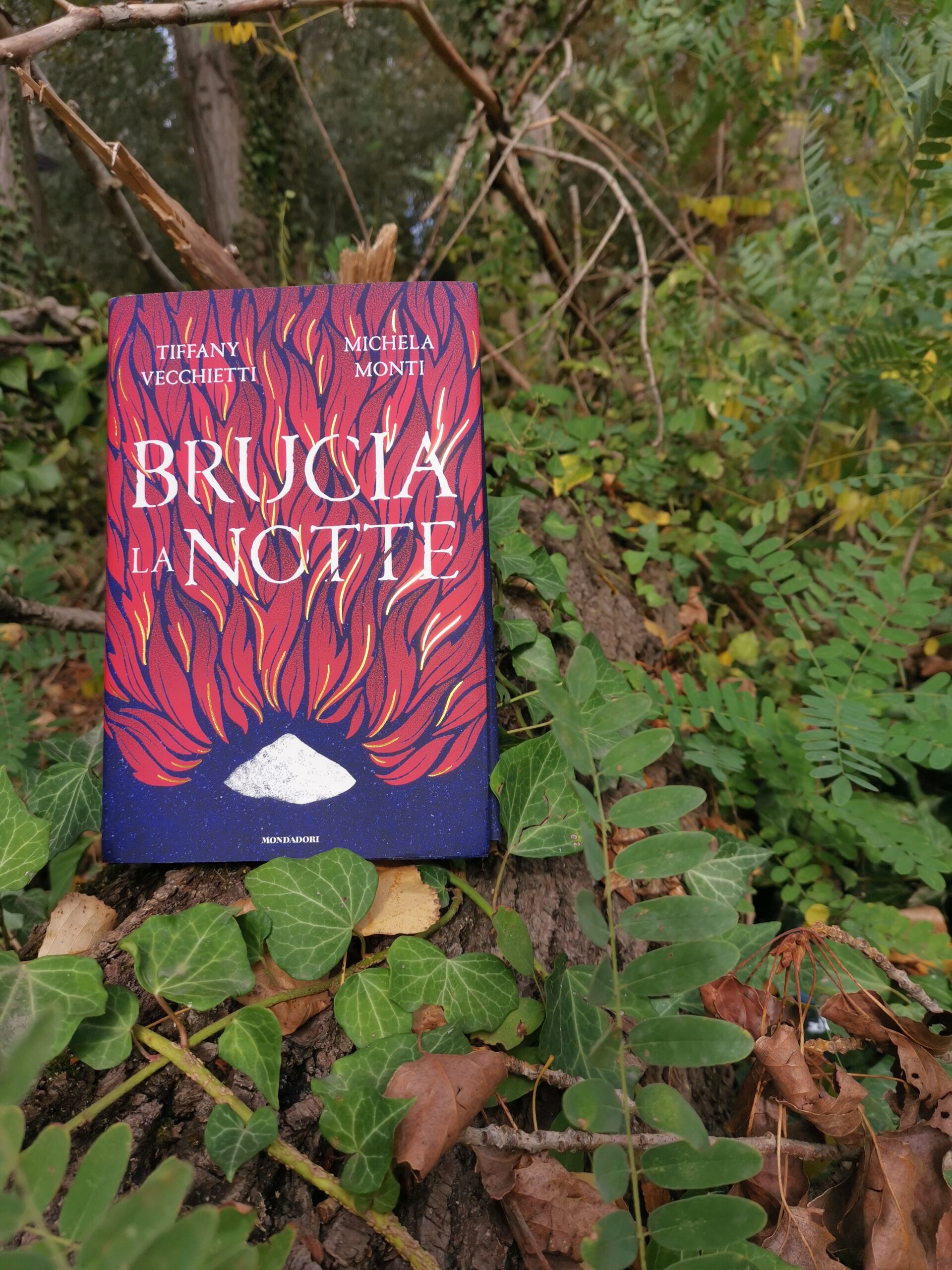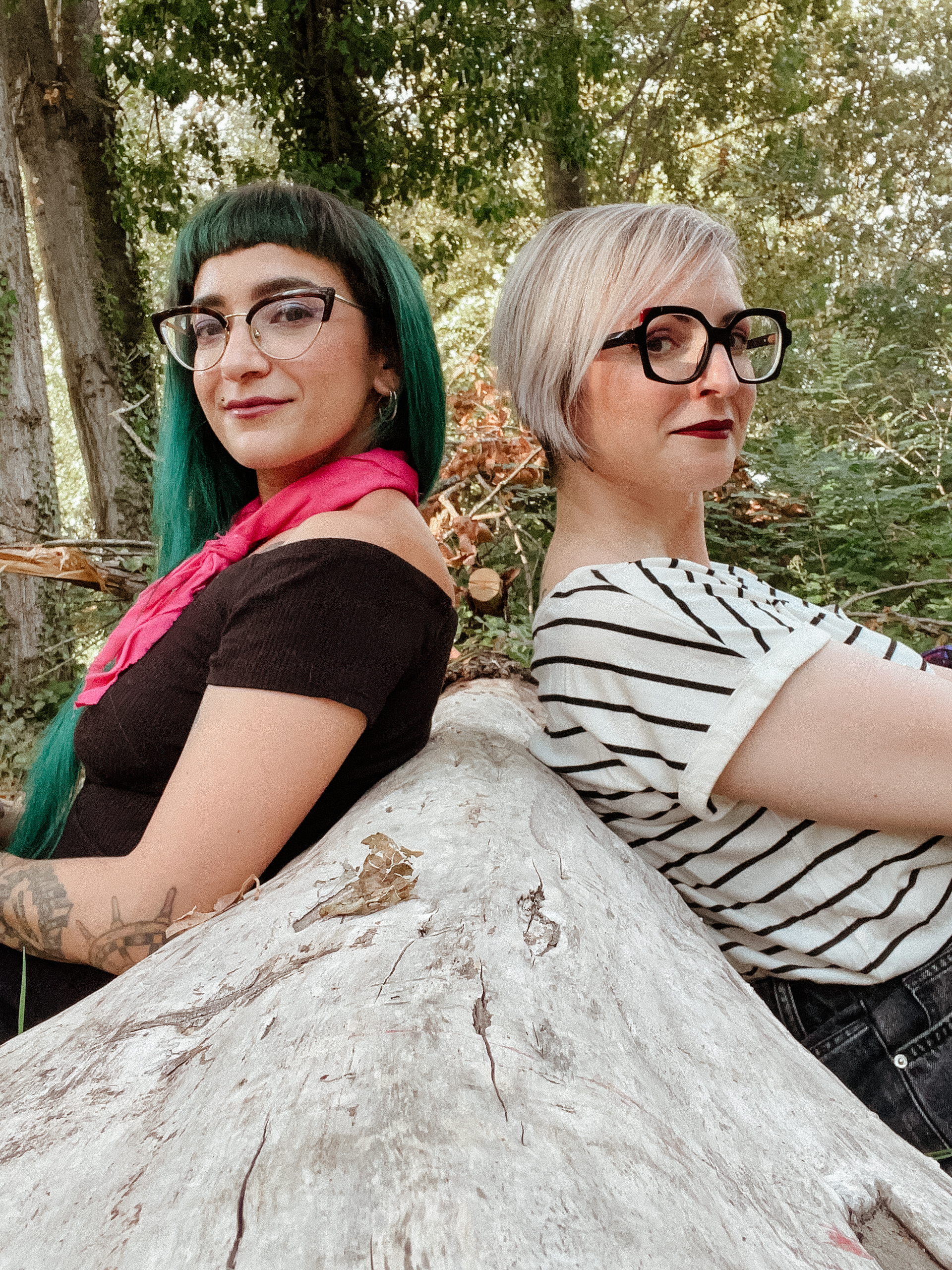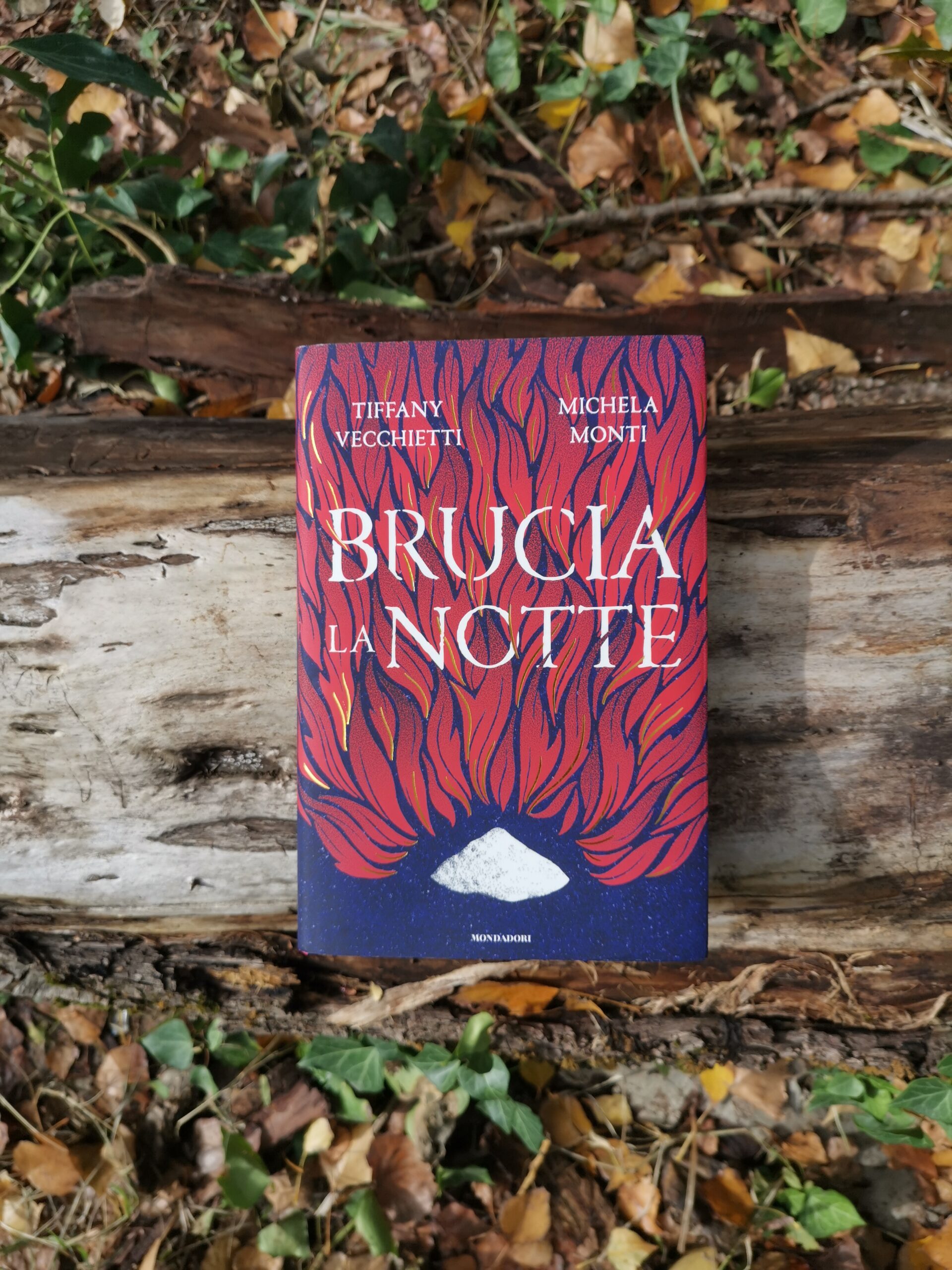Resistance and Revolution.
Ani and Bianca.
Tiffany Vecchietti and Michela Monti.
Two concepts, two protagonists, two authors united by the feminine and feminist struggle that, from the pages of a despotic novel like “Brucia la Notte” (lit. “burn the night”) resonates with our reality and the increasingly vivid desire for a community that realizes the importance of sharing, freedom and hope. Through the words written in the novel and shared in this interview, Tiffany and Michela remind us (today more than ever) that the love from and for the people we love, the ideals of justice and sisterhood are like sparks: they slowly turn into flames that burn everything, without ever really extinguishing.
We know you individually for your work, your social presence and other contributions, but when and how did the idea of writing this book together come about?
It all started with a dream, shared between us without thinking about what it could have created, on which we continued to add details. We thought about it, it became a fixed thought, and the story took on an increasingly concrete form. When we looked at each other to ask ourselves whether or not to try to make that dream into a book, the answer was already there.
How much of you can we find in the protagonists, Ani and Bianca, or in the other women they meet during the events of the story? And conversely, did the characters manage to surprise you in any way while you were outlining them?
Clearly there is so much of us in all the characters we have written. Ani and Bianca are two pillars of the story, they are opposite and complementary, with traits that belong to us, attitudes that we recognize as ours, albeit exasperated. But we didn’t want to superimpose what we are on them, because it would have been a boring and absolutely self-centered exercise. We knew how automatic it is to take inspiration from ourselves, but we didn’t want to limit ourselves, in fact, we drew heavily from those around us and from experiences that we do not live firsthand precisely to go beyond our limitations. The thing we were most interested in was never creating that aura of perfection that wouldn’t have made sense. We would have regretted that anyway. And, as for the surprises, our hope is that all the different voices of “Brucia la Notte” (Burn the Night) will amaze our readers.

In some ways, being a despotic and feminist novel, it reminded me of “The Handmaid’s Tale”, but I loved the originality in choosing to set a similar story in the Romagna countryside: how did you let yourself be inspired in the writing process, both by contemporary and local folkloristic fiction and not?
Feminist (and feminine, but also queer) dystopia is one of our absolute favorite things. It is true that “The Handmaid’s Tale” is perhaps the most famous work, and we are undoubtedly linked to it because Margaret Atwood is an incredibly powerful voice, as well as Ursula LeGuin, Octavia Butler, Alice Sheldon, Marge Piercy, Joanna Russ, Leonora Carrington, Angela Carter, Naomi Mitchinson. Among the recent voices, it is impossible not to mention Amal El-Mohtar, Malorie Blackman, NK Jemisin and the host of talented Italian authors such as Violetta Bellocchio, Elisa Emiliani, Lorenza Ghinelli, Laura Pugno and, above all, one of the people we admire the most and who in some way has inextricably linked our paths, even if unconsciously, aka Nicoletta Vallorani.
Dystopia offers us a tool to talk about our anxieties, about the ‘here and now’, but projecting them into a distance that manages to make them more universal. While this exercise has very often been done with invented settings or in foreign territories, there is a certain shyness in thinking back to the places behind the house. Yet it is precisely in those places that we learn to love and be afraid of everything we can lose, understanding how fragile is the balance that binds our affections to these territories. When we started thinking about the story of “Brucia la Notte”, it was almost inevitable to look for the source of those tensions that do not make us sleep a wink, that chase us all day long like ghosts. So we found some close places that have always represented something precise, such as Cervia and its salt pans or Santarcangelo inside its caves. For others, however, we have tried to distort or overturn the historical and symbolic meaning, as in the case of Dozza and San Marino.
The desire to burn everything: how can the struggle for freedom be actualized?
Struggle never goes out of style, nor does it lose its necessity just because we feel more defeated, more discouraged and often do not see the meaning of it. In recent weeks, we have experienced a collective moment that has reminded us of this, born from a tragic episode such as that of the femicide of Giulia Cecchettin. In the midst of unimaginable suffering, Giulia’s family did not close themselves off, but made sure that that pain was not a private matter, that it was socialized, that it went through the lives of all the people upset by yet another victim, and chose to give a greater meaning to that horror. It is something that has not been seen in Italy in the last twenty years.
“Brucia la Notte” talks a lot about how difficult the struggle is, but also about how it only makes sense when it becomes collective. It is only when one abandons the “I” to become a “we” that one can burn everything. One of our characters, in a fundamental scene, says ‘Even if we are defeated, not a day must go by without an attempt at revolution‘: revolution is that spark that we believe can be ignited precisely when we return to sharing, to live something common, not to give up when we feel most defeated. Perhaps it is precisely in the darkest moments that we need to rediscover the warm embrace of struggle.

“Dystopia offers us a tool to talk about our anxieties, about the ‘here and now’, but projecting them into a distance that manages to make them more universal. While this exercise has very often been done with invented settings or in foreign territories, there is a certain shyness in thinking back to the places behind the house. Yet it is precisely in those places that we learn to love and be afraid of everything we can lose, understanding how fragile is the balance that binds our affections to these territories.”
What is resistance for you, as women but above all as human beings?
The sisterhood, the care, the understanding towards lives and experiences different from ours, the will not to collapse in front of an exhausting reality, the desire to change things, to burn everything. The Resistance is the union of all these things, inextricably linked to our roots, because you cannot talk about Romagna without thinking of the Resistance in history, without remembering the people who fought for their and our freedom. Resistance is an act of recognition towards those who have already practiced it, but above all it is our salvation.
The protagonists of this book are a reminder of the ever-present importance of change, especially in the face of social injustices: on a personal level, what was your greatest act of rebellion?
In reality, ours are quite boring lives, with no heroic deeds to record in the registers. The real great act of rebellion that we carry out every day is not to succumb, not to give up and to resist in a world that is getting ugly, that increasingly severs the bonds between people, and that sucks up any hope of change. If the world is a vampire, we try to arm ourselves with a shovel and garlic and go on board (fortunately, accompanied by many sisters and many people who support us).
Perhaps the real act of rebellion was to open our eyes and start looking at the world through a feminist lens.
What’s the last thing you discovered about yourself through writing and reading?
Writing together has taught us to rely completely on each other. It may seem little seen from the outside, but this immense sense of trust was not born with the idea of “Brucia la Notte”, it has been cemented day after day, word after word, crisis after crisis over the course of these three years.

What’s the book on your bookstand right now?
T: “Seidmadur. Lo Sciamano” by Maddalena Marcarini.
M: “Deathless”, by Catherynne M. Valente, and “Before You Close Your Eyes”, by Morena Pedriali Errani.
What is your happy place?
Apart from Romagna, which is an obvious answer, our island is an imaginary place, full of cats, books and a lot of records. There is certainly no shortage of a centuries-old bakery run by an elderly woman who peddles at every hour of the day.
The book closes with a cliffhanger: can you already give us some information about the next chapter?
We’re finishing it now, fitting it in every free moment between presentations. We can only tell you that it will be a little more substantial than “Brucia la Notte”, we have not spared twists and very intense moments. And we will also return to a place already mentioned in the first book, which is in Emilia. We can’t reveal more.
Photos by Tiffany Vecchietti
Thanks to Mondadori





